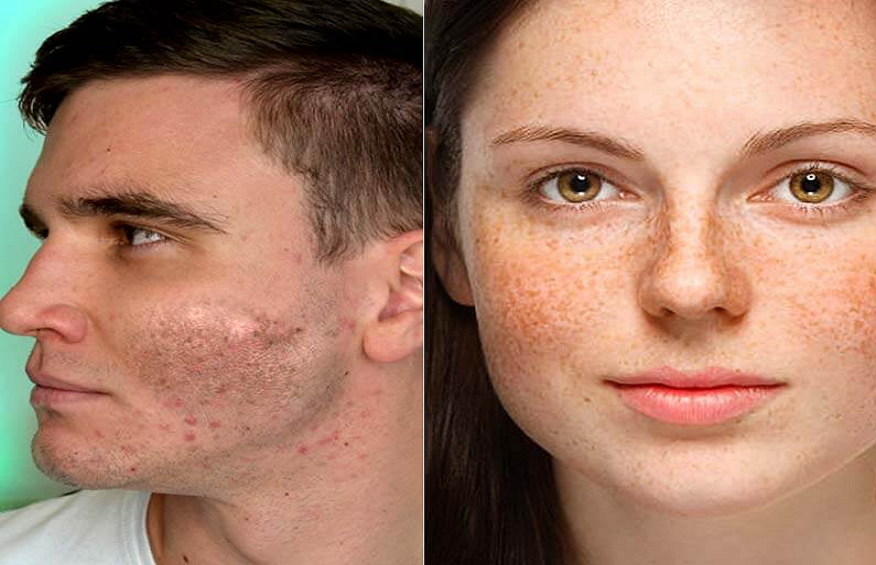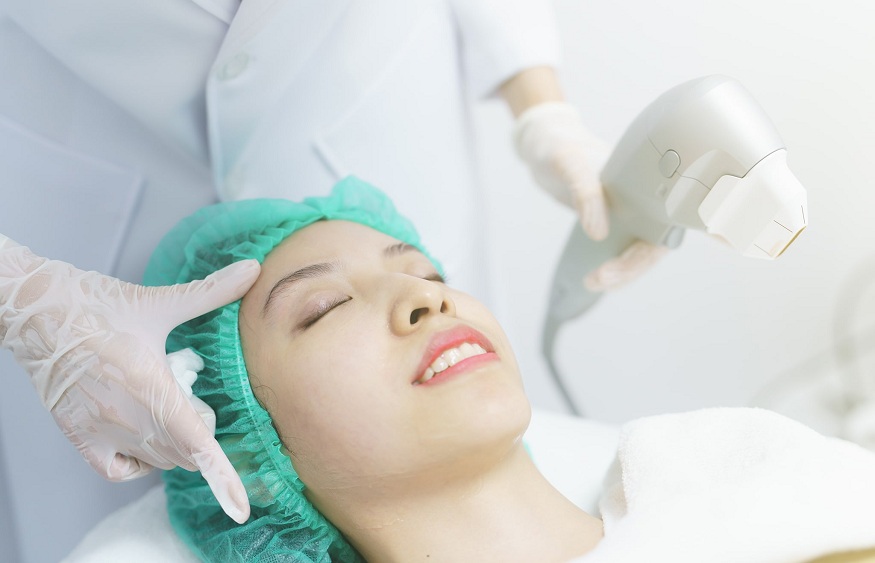
Hyperpigmentation is a common skin condition characterized by the darkening of certain areas of the skin. It can be a source of distress for many individuals, as it affects their appearance and can lead to a loss of confidence. In this article, we will explore the causes of hyperpigmentation and discuss effective strategies to fix this concern.
Causes of hyperpigmentation
Below are common causes of hyperpigmentation and their associated hyperpigmentation solutions.
Sun exposure
Excessive exposure to the sun’s harmful ultraviolet (UV) rays is a major cause of hyperpigmentation. When the skin is exposed to the sun, it produces more melanin as a defense mechanism to protect itself from UV damage. This excess production of melanin leads to dark spots or patches on the skin.
Solution:
Sun protection is essential in preventing and managing hyperpigmentation. Always wear a broad-spectrum sunscreen with a high SPF and reapply every two hours. Use protective clothing, seek shade, and avoid sun exposure during peak hours.
Hormonal changes
Hormonal fluctuations during pregnancy, menopause, or while taking oral contraceptives can trigger hyperpigmentation. This type of hyperpigmentation is known as melasma or the “mask of pregnancy.” It typically appears as symmetrical dark patches on the face, cheeks, forehead, and upper lip.
Solution:
In cases involving hormones, it’s best to consult a doctor for professional advice. They may recommend topical creams or treatments containing ingredients like hydroquinone, kojic acid, azelaic acid, or retinoids, which can help fade the dark spots over time. It is crucial to use these treatments under the supervision of a healthcare professional.
Post-inflammatory hyperpigmentation (PIH)
PIH occurs as a result of inflammation or injury or trauma to the skin. This can be from acne, burns, cuts, or eczema and the like. It can also come from surgeries, excessive exfoliation, or harsh chemical treatments.
When the skin heals, it produces excess melanin, leading to darkened spots.
Solution:
To prevent PIH, avoid picking or popping acne lesions. It is essential to follow proper skin care practices, such as avoiding excessive exfoliation and using gentle, non-irritating products.
Treat inflammatory skin conditions promptly. Over-the-counter products containing ingredients like vitamin C, niacinamide, or licorice extract may help lighten PIH.
Additionally, protect the healing skin from the sun to minimize the risk of hyperpigmentation.
In severe cases, a dermatologist may recommend laser therapy or chemical peels to accelerate skin cell turnover and reduce pigmentation.
Genetic predisposition
Some individuals may have a genetic predisposition for developing hyperpigmentation. Certain ethnicities, such as people with darker skin tones, are more prone to experiencing hyperpigmentation.
Solution:
While it may be challenging to completely prevent hyperpigmentation due to genetic factors, diligent sun protection, gentle skincare routines, and early intervention can help manage and minimize its appearance.
Laser skin therapy can also help, as long as treatment plans are followed consistently.
General, professional solutions for hyperpigmentation
We’ve noted some of the solutions to specific causes of hyperpigmentation above. However, most hyperpigmentation can be treated in a general way at a professional cosmetic spa, under the supervision of a doctor. Below are common treatments for hyperpigmentation.
Topical treatments
Over-the-counter creams, serums, and gels containing ingredients like hydroquinone, retinoids, vitamin C, kojic acid, azelaic acid, niacinamide, or licorice extract can help lighten hyperpigmentation. These ingredients work by inhibiting melanin production or promoting skin cell turnover.
It is essential to use these creams diligently, and according to a doctor’s instructions, if you want to see results from them. They work in the long term, and in a preventative way too. You won’t likely see overnight results from using them.
Chemical peels
Performed by dermatologists, chemical peels involve applying a solution to the skin to remove its outer layers, revealing fresh, new skin that lies beneath. Chemical peels can be effective in reducing hyperpigmentation caused by sun damage, PIH, or melasma. This is only the case, however, when done carefully. Intense chemical peels can cause burns, which can cause more hyperpigmentation.
Laser therapy
Laser treatments can target specific, pigmented areas without damaging the surrounding skin. Laser therapy works by breaking down melanin clusters and stimulating collagen production, resulting in improved skin tone and texture.
Like with chemical peels, laser skin rejuvenation must be done with caution, to avoid burns.
Microdermabrasion
This procedure involves gently exfoliating the skin’s surface with sand crystals to remove dead skin cells and stimulate cell turnover. It can help lighten hyperpigmentation by promoting the growth of new, evenly pigmented skin cells.
Hyperpigmentation can be annoying, but it can also be reduced
Hyperpigmentation can be a frustrating and distressing skin condition. But, effective solutions are available to reduce skin darkening. Preventive measures, such as sun protection and proper skincare, play a crucial role in managing hyperpigmentation.
Consulting a doctor can provide personalized treatment options based on the underlying cause and severity of your hyperpigmentation. By understanding the causes and utilizing appropriate solutions, individuals can achieve a more even and radiant complexion, restoring their confidence and self-esteem. That said, when these cases are genetic, ongoing maintenance will be required.



